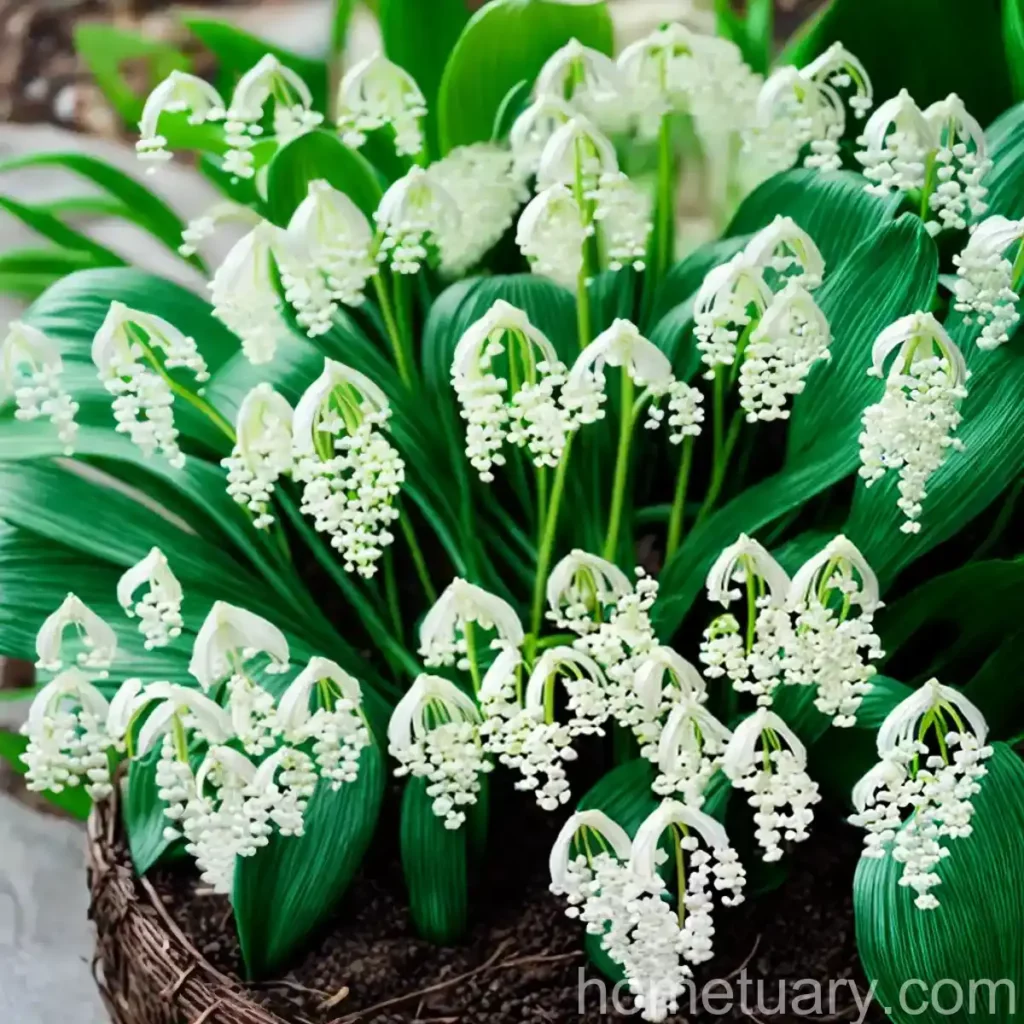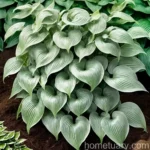The Enchanting False Lily of the Valley (Maianthemum bifolium): A Comprehensive Guide
The false lily of the valley, scientifically known as Maianthemum bifolium, is a charming and delicate perennial plant that holds a special place in the hearts of gardeners and botanists alike. With its graceful foliage and dainty white blooms, this woodland plant is not only an exquisite addition to gardens but also serves practical and ecological purposes. In this comprehensive guide, we will delve into the intricate world of the false lily of the valley, exploring its characteristics, cultivation, uses, and much more. Whether you’re a seasoned horticulturist or a novice plant enthusiast, there’s something intriguing about this enchanting plant that is bound to captivate your interest.
What is False Lily of the Valley (Maianthemum bifolium)?
False lily of the valley, also known as May lily or two-leaved Solomon’s seal, is a herbaceous perennial plant native to Europe and parts of Asia. It belongs to the Asparagaceae family and is closely related to true lily of the valley (Convallaria majalis), although they are not botanically related. The plant is prized for its delicate, heart-shaped leaves and clusters of small, fragrant, white flowers that bear a resemblance to those of the true lily of the valley.
Key Takeaways – False Lily of the Valley (Maianthemum bifolium)
Let’s start our exploration of the false lily of the valley by summarizing some key takeaways about this captivating plant:
- Plant Name: False Lily of the Valley (Maianthemum bifolium)
- Family: Asparagaceae
- Common Names: May lily, two-leaved Solomon’s seal
- Characteristics: Delicate foliage, fragrant white flowers, spreading rhizomes
- Habitat: Woodlands, shady areas, moist and well-drained soil
- Uses: Ornamental gardening, ground cover, medicinal purposes
- Cultivation: Shade-loving, low maintenance, suitable for woodland gardens
- Propagation: Rhizome division, seeds
- Popularity: Beloved for its beauty and resilience
- Common Diseases: Powdery mildew, leaf spot
- Common Pests: Aphids, slugs, snails
With these key points in mind, we will now embark on a detailed journey through the various aspects of caring for and appreciating the false lily of the valley.
Culture of False Lily of the Valley (Maianthemum bifolium)
Cultivating the false lily of the valley can be a rewarding experience, as it offers a glimpse into the enchanting world of woodland flora. Understanding its cultural requirements is essential for nurturing this graceful plant and allowing it to thrive in your garden.
Water
False lily of the valley flourishes in moist soil, making it well-suited for woodland and shade gardens. While it appreciates consistent moisture, it is important to avoid waterlogged conditions, which can lead to root rot. Regular watering, particularly during dry spells, is crucial to support the plant’s growth and flowering.
Sunlight
One of the defining features of the false lily of the valley is its preference for shade. It thrives in dappled or partial shade, making it an ideal choice for gardens with limited direct sunlight. When choosing a planting location, prioritize areas with filtered or indirect light to provide the optimum growing conditions for this shade-loving plant.
Fertilizer
In the wild, the false lily of the valley draws nourishment from the rich organic matter present in woodland soils. When cultivating it in garden settings, incorporating compost or well-rotted organic matter into the soil during planting can provide essential nutrients for the plant. Additionally, applying a balanced, slow-release fertilizer in early spring can support healthy growth and abundant flowering.
Soil
The ideal soil for false lily of the valley is loose, humus-rich, and well-drained. It thrives in soils with a slightly acidic to neutral pH, and the addition of organic matter can enhance its growing environment. When planting or transplanting the false lily of the valley, ensure that the soil is loose and fertile to promote vigorous root development.
Pruning False Lily of the Valley (Maianthemum bifolium)
Pruning is a straightforward aspect of false lily of the valley care, primarily focused on maintaining its desirable appearance and managing its growth.
Removing Spent Blooms
After the false lily of the valley has finished flowering, it is beneficial to remove the spent blooms to prevent the plant from expending energy on seed production. This encourages the plant to channel its resources into developing healthy foliage and promotes its overall vigor.
Controlling Spread
As a spreading perennial through rhizomes, false lily of the valley has the potential to colonize areas rapidly. Regularly monitoring its growth and containing its spread, if desired, by removing excess rhizomes can prevent it from becoming invasive in the garden.
Propagation of False Lily of the Valley (Maianthemum bifolium)
Propagation methods for the false lily of the valley encompass both division and seed sowing, providing options for expanding its presence in the garden or sharing its beauty with others.
Rhizome Division
Dividing established clumps of false lily of the valley is a reliable method to propagate the plant. In late summer or early autumn, carefully lift the rhizomes and divide them into smaller sections, ensuring that each division has healthy roots and shoots. Replant the divisions in prepared soil, and keep them consistently moist to support their establishment.
Seed Sowing
Sowing seeds of the false lily of the valley can yield new plants, although this method requires patience and a longer period to establish mature individuals. Collect ripe seeds in late summer or early autumn and sow them in pots or seed trays filled with a well-draining potting mix. Keep the soil consistently moist and place the containers in a shaded area. Germination typically occurs in the following spring, and the young seedlings can be transplanted into the garden once they have developed several sets of true leaves.
Container Gardening with False Lily of the Valley (Maianthemum bifolium)
The false lily of the valley’s adaptability to growing in containers makes it a versatile choice for enhancing outdoor and indoor spaces with its elegance.
Container Popularity
Many gardeners appreciate the false lily of the valley for its suitability in container gardening. Its compact growth habit and shade tolerance allow it to thrive in containers placed in shaded patios, balconies, or indoor spaces, adding a touch of woodland charm to the surroundings.
Container Cultivation
When cultivating the false lily of the valley in containers, it is essential to select a pot with drainage holes to prevent waterlogging. Use a well-draining potting mix that retains moisture without becoming waterlogged, and position the container in a shaded location to mimic the plant’s preferred growing conditions.
Common Diseases of False Lily of the Valley (Maianthemum bifolium)
Although the false lily of the valley is generally resilient, it is susceptible to certain diseases that can affect its health and appearance.
Disease Diagnosis
Two common diseases that may afflict the false lily of the valley are powdery mildew and leaf spot. Powdery mildew presents as a white, powdery coating on the foliage, while leaf spot manifests as dark, discolored spots on the leaves. Regular monitoring of the plant’s foliage and prompt treatment can help manage these diseases and mitigate their impact on the plant.
Common Pests affecting False Lily of the Valley (Maianthemum bifolium)
In addition to diseases, the false lily of the valley may encounter pests that can diminish its vitality and aesthetic appeal.
Common Pests
Aphids, as well as slugs and snails, are among the pests that can target the false lily of the valley. Aphids may feed on the plant’s tender shoots and foliage, while slugs and snails can cause damage by grazing on the leaves. Vigilant inspection and appropriate pest control measures can help protect the plant from these adversaries.
Botanist’s Tips for Growing False Lily of the Valley (Maianthemum bifolium)
As a plant scientist, I’ve gathered valuable insights and tips for successfully cultivating the false lily of the valley, harnessing its ornamental appeal, and addressing common challenges. Drawing from my expertise and experience, I’ve compiled a set of botanist’s tips that can guide you in nurturing this enchanting plant:
- Shade Preference: Embrace the false lily of the valley’s preference for shade by providing it with a site that offers dappled or partial shade, replicating its natural woodland habitat.
- Moisture Management: Maintain consistently moist soil, avoiding waterlogged conditions, to support the plant’s growth and flowering.
- Communal Planting: Pair the false lily of the valley with companion plants that share its shade tolerance and moisture requirements, fostering a harmonious and visually appealing garden ensemble.
- Disease Vigilance: Routinely inspect the plant for signs of powdery mildew and leaf spot, addressing these diseases promptly to safeguard the plant’s well-being.
- Pest Control: Implement preventive measures, such as discouraging aphids and managing slug and snail populations, to protect the false lily of the valley from pest-related damage.
Fun Facts about the False Lily of the Valley (Maianthemum bifolium)
Let’s delve into some intriguing and delightful facts that illuminate the unique qualities and allure of the false lily of the valley:
- The false lily of the valley’s specific epithet, “bifolium,” reflects its characteristic feature of having two leaves on each flowering stem.
- In some cultures, the false lily of the valley is associated with symbolism such as humility and sweetness, accentuating its endearing nature.
- The plant’s delicate white flowers exude a sweet fragrance that can enchant and captivate anyone who encounters it.
- False lily of the valley has been used in traditional medicine for various purposes, leveraging its therapeutic properties for wellness and healing.
Links to External Resources
For additional insights, inspiration, and in-depth information about the false lily of the valley, I recommend exploring the following external resources:
- Royal Horticultural Society – Maianthemum bifolium
- Missouri Botanical Garden – Maianthemum bifolium
- PlantSnap – False Lily of the Valley
Conclusion
The false lily of the valley, with its understated elegance and invaluable ecological contributions, holds a distinct allure that resonates with plant enthusiasts and nature admirers. Whether it graces woodland gardens, container plantings, or shaded landscapes, it lends a touch of grace and enchantment to its surroundings. By understanding its cultural requirements, embracing its ornamental features, and respecting its natural habitat, we can embrace the captivating essence of the false lily of the valley and cultivate a deeper appreciation for its understated beauty.
As you embark on your journey of discovering and nurturing the false lily of the valley, may its delicate blooms and tranquil demeanor inspire you to cherish the nuanced charm of this enchanting woodland plant.
Keywords: False lily of the valley care, Maianthemum bifolium plant, False lily of the valley characteristics, Growing false lily of the valley, Maianthemum bifolium in gardens, False lily of the valley cultivation, Maianthemum bifolium care guide, False lily of the valley propagation, Maianthemum bifolium planting tips, False lily of the valley varieties, Maianthemum bifolium medicinal uses, False lily of the valley foliage, Maianthemum bifolium blooms, False lily of the valley habitat, Maianthemum bifolium natural distribution, False lily of the valley growing conditions, Maianthemum bifolium flowering season, False lily of the valley landscape uses, Maianthemum bifolium groundcover, False lily of the valley shade-tolerant plant, Maianthemum bifolium perennial plant, False lily of the valley ornamental features, Maianthemum bifolium woodland plant, False lily of the valley soil requirements, Maianthemum bifolium hardiness, False lily of the valley wildlife-friendly plant, Maianthemum bifolium companion planting, False lily of the valley container gardening, Maianthemum bifolium garden design, False lily of the valley pests and diseases, Maianthemum bifolium invasive species, False lily of the valley growing tips, Maianthemum bifolium drought-tolerant, False lily of the valley low maintenance plant, Maianthemum bifolium landscape plant, False lily of the valley indoor growing, Maianthemum bifolium groundcover alternatives, False lily of the valley woodland garden plant, Maianthemum bifolium shade garden, False lily of the valley wildflower, Maianthemum bifolium species information, False lily of the valley plant family, Maianthemum bifolium pollination, False lily of the valley plant symbolism, Maianthemum bifolium traditional uses, False lily of the valley folklore, Maianthemum bifolium ethnobotany, False lily of the valley scent, Maianthemum bifolium groundcover ideas, False lily of the valley planting guide















